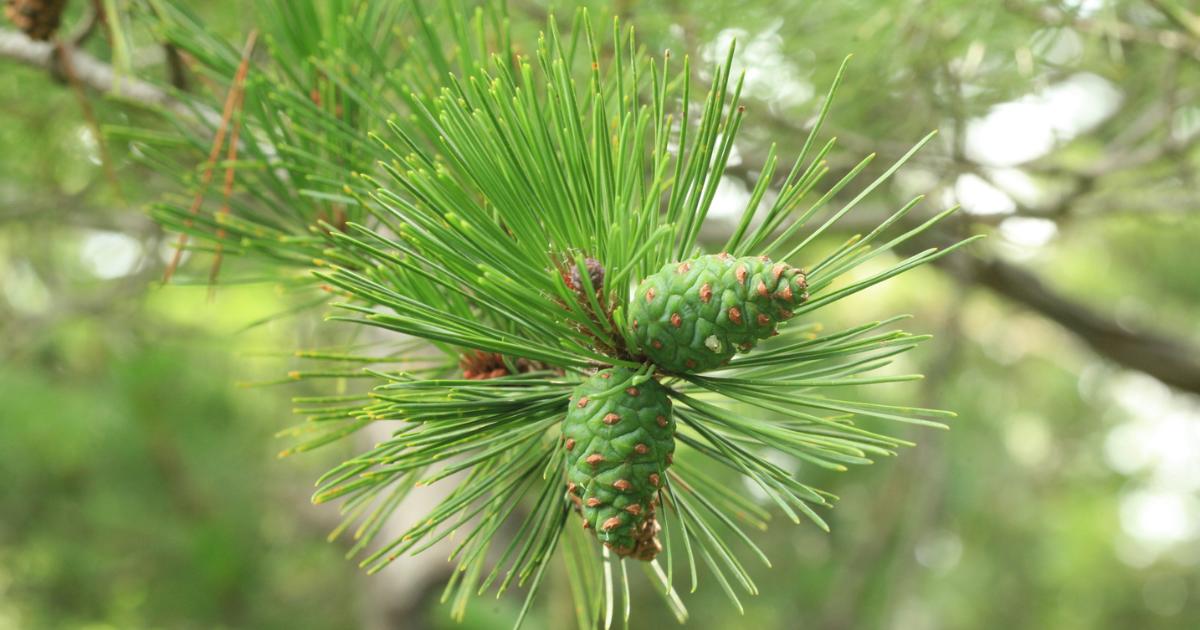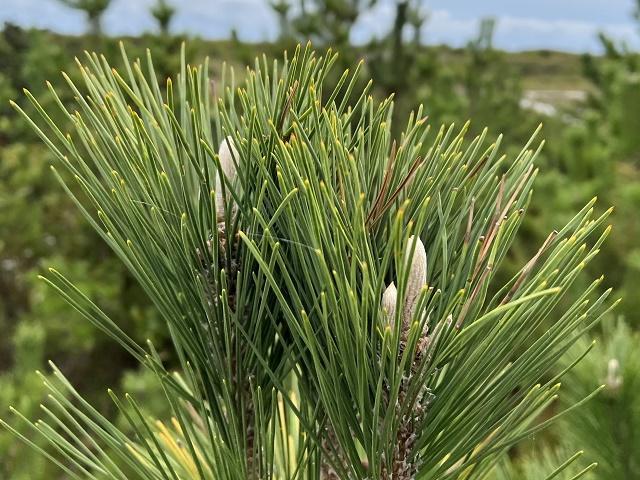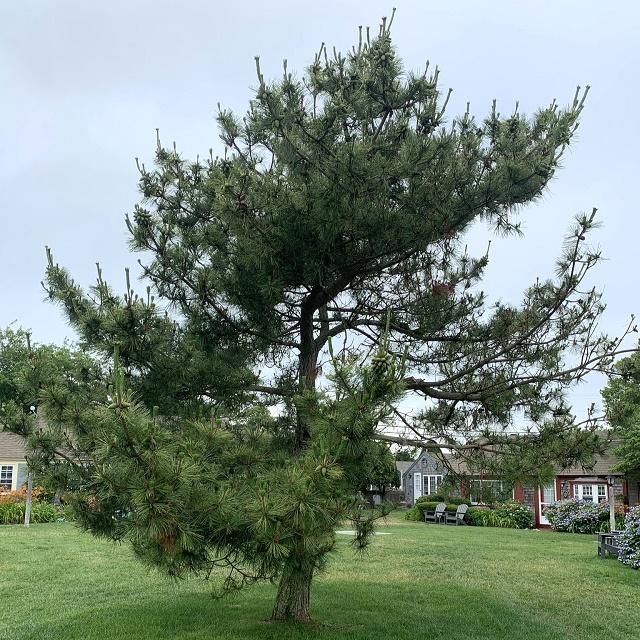Characteristics of Japanese Black Pine (Pinus thunbergii)

Japanese Black Pine (Pinus thunbergii) is a species of conifer tree native to the Japanese coast, to be precise in the Kyushu, Shikoku, and Honshu areas. Apart from there, this tree is also found growing in South Korea.
In North America, Pinus thunbergii trees have experienced many deaths caused by pinewood nematodes (Bursaphelenchus xylophilus). The nematodes are spread via beetles. But not only nematodes but blue tree mushrooms also frequently attack these trees and cause rapid species decline.
This nematode originating from the United States of America has also spread to Japan in a hurry, putting the Japanese black pine tree under threat in its natural habitat.
In Japan, it is widely used as an ornamental tree in gardens and yards, and even more popularly, Japanese black pine is a popular bonsai subject.
There are dozens of Pinus thunbergii cultivars, including:
- ‘Akame’
- ‘Albovariegata’
- ‘Aocha-matsu’
- ‘Arakawa-sho’
- ‘Aurea’
- ‘Awaji’
- ‘Banshosho’
- ‘Beni-janome’
- ‘Beni-kujaku’
- ‘Chase’s Yellow’
- ‘Compacta’
- ‘Corticosa’
- ‘Dainagon’
- ‘Eechee’
- ‘Elmwood’
- ‘Emery’s Dwarf’
- ‘Frosty Patches’
- ‘Fuji’
- ‘Gan-seki-matsu’
- ‘Gan-seki-sho’
- ‘Girard Dwarf’
- ‘Glauca Compacta’
- ‘Green Elf’
- ‘Gyokkho’
- ‘Hayabusa’
- ‘Henry’s Dwarf’
- ‘Herb Kelly Dwarf’
- ‘Hitobano-matzu’
- ‘Ichiyo’
- ‘Iihara’
- ‘Ippon-matzu’
- ‘Iseli Golden’
- ‘Iwai’
- ‘Janome’
- ‘Katasoge-matzu’
- ‘Katsuga’
- ‘Kikko-sho’
- ‘Kokuho’
- ‘Kotobuki’
- ‘Koyosho’
- ‘Kujaku’
- ‘Kuro-fuiri-matzu’
- ‘Kyokko’
- ‘Kyushu’
- ‘Luteolineata’
- ‘Maijima’
- MAJESTIC BEAUTY®
- ‘Miajima’
- ‘Mini Mounds’
- ‘Monina’
- ‘Mount Hood Prostrate’
- ‘Nagata’
- ‘Nana’
- ‘Nee’
- ‘Nishiki-tsukasa’
- ‘Oculus Draconis’
- ‘Oculus Draconis Tortuosa’
- ‘Ogi’
- ‘Ogon’
- ‘Okinakabu’
- ‘Porky’
- ‘Pygmaea’
- ‘Rezek’
- ‘Sayonara’
- ‘Senryu’
- ‘Shidare’
- ‘Shimo-fuiri-matsu’
- ‘Shinsho’
- ‘Shioguro’
- ‘Shiraga-matsu’
- ‘Shirofume’
- ‘Shirome Janome’
- ‘Suiken’
- ‘Sunsho’
- ‘Taihei’
- ‘Thunderhead’
- ‘Toiatu’
- ‘Torafu’
- ‘Tsukasa’
- ‘Variegata’
- ‘Watnong’
- ‘White Band’
- ‘Yachio’
- ‘Yamato’
- ‘Yatsubusa’
- ‘Ye-i-kan’
- ‘Yoshimura’
- ‘Yumaki’
In the local language, Pinus thunbergii tree has many synonyms such as Gomsol (곰솔) in Korean, Hēisōng (黑松) in China, Kuromatsu (黒 松) in Japan, and Japanese Black Pine in International.
Characteristics of Japanese Black Pine Leaves

The leaves are typical pine needles, grow on the fascicles with a white sheath at the base, and each needle is 7-12 cm long and 1.5-2 mm wide.
Characteristics of Japanese Black Pine Fruit

The fruit is cone-shaped, the female fruit is 4-7 cm long, and the male fruit is 1-2 cm. Japanese black pine fruit takes about 2 years to ripen.
Characteristics of Japanese Black Pine Tree

Most of the Japanese black pine trees grow in coastal areas and at the ends of rocky beaches. This tree can grow to a height of 35-40 meters in the wild. However, when kept as an ornamental tree, it is rare to let it grow to a height.
The bark is gray on the young trunk, but it turns black as the trunk and branches age.
Pinus thunbergii tree that currently holds the record for the tallest grows at Kasuga-Taisha Shrine, which has a height of 66 meters.
Leave a Reply